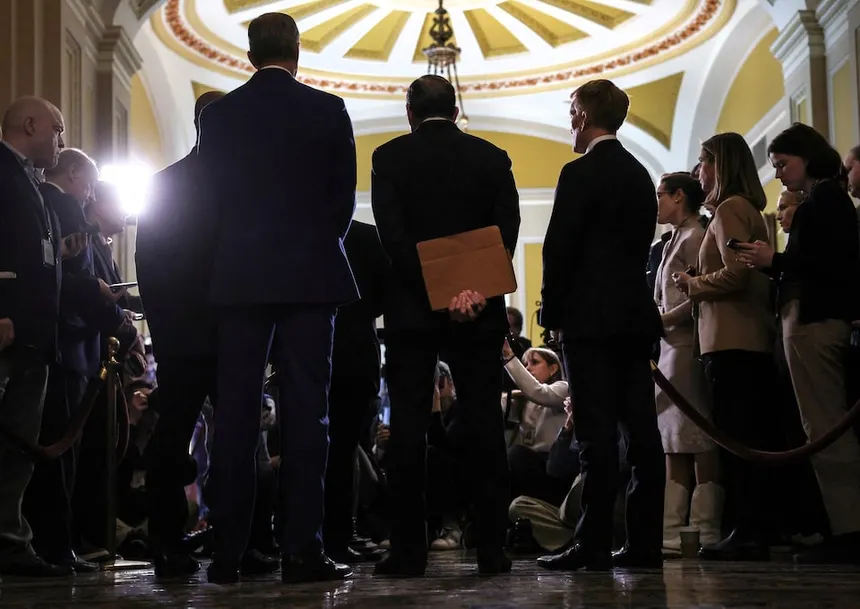A Landmark Decision by Trump
In a move that has sparked nationwide debate, former President Donald Trump has signed an executive order declaring English as the official language of the United States. This historic decision has far-reaching implications for government operations, education, and immigration policies.

Key Highlights of the Executive Order
- English as the Official Language: Government agencies and federal institutions must conduct all official business in English.
- Impact on Immigrants: Non-English speakers may need to learn English for official communications.
- Changes in Education: Schools may shift their bilingual education programs to emphasize English proficiency.
- Effects on Government Services: Forms, documents, and public services will prioritize English.
Why Did Trump Sign This Executive Order?
A Push for National Unity
Trump’s administration has long argued that a common language fosters national unity. Supporters claim that making English the official language will strengthen American identity and reduce communication barriers.
Immigration and Cultural Assimilation
This policy aligns with Trump’s stance on immigration. His administration believes that immigrants should integrate into American society by learning English, rather than relying on multilingual government services.
Reducing Government Costs
Supporters also argue that translating documents into multiple languages costs taxpayers millions of dollars. With this order, the government could significantly cut translation and interpretation expenses.

How Will This Affect Immigrants?
Increased Pressure to Learn English
Immigrants who do not speak English may face difficulties in accessing government services, filling out official forms, or communicating with authorities.
Concerns from Civil Rights Groups
Advocacy organizations argue that this policy may discriminate against non-English speakers and create barriers to essential services like healthcare and legal assistance.
Impact on Naturalization Process
New immigrants applying for citizenship may now have to meet stricter English language requirements, making it harder for non-native speakers to become U.S. citizens.
Impact on Schools and Education
Changes to Bilingual Education Programs
Many schools currently offer bilingual education, especially in states with large immigrant populations. This executive order could force schools to prioritize English-only instruction, reducing support for students who speak other languages.
Effect on ESL Programs
English as a Second Language (ESL) programs may receive more funding to help non-native speakers adapt. However, critics argue that eliminating multilingual programs may hinder students who struggle to learn English quickly.
Debate Among Educators
Some educators support the move, saying it will encourage students to master English faster. Others worry that it will disadvantage children from non-English-speaking backgrounds, making it harder for them to succeed academically.

Government Services: What Will Change?
Official Documents and Forms
Government agencies will now be required to provide official documents exclusively in English. This means fewer translations for services such as tax forms, DMV applications, and voter registration.
Public Assistance Programs
Non-English speakers may face challenges when applying for benefits like Medicaid, Social Security, or food assistance programs if translation services are reduced.
Legal and Court Proceedings
Court interpreters may still be available for non-English speakers, but legal proceedings will primarily be conducted in English. This could create difficulties for individuals who rely on interpreters in legal matters.
Public Reaction: Mixed Responses Across the Nation
Supporters Applaud the Decision
- Many Americans believe that English should have been the official language long ago.
- Supporters argue this will promote national unity and streamline government operations.
- Some believe it is a necessary step to encourage cultural assimilation among immigrants.
Critics Express Strong Opposition
- Civil rights groups claim this policy discriminates against non-English speakers and violates their rights.
- Some states with large immigrant populations, like California and New York, may resist implementing the order.
- Business leaders worry about economic impacts, especially in industries that rely on multilingual workers.
Legal Challenges: Can This Executive Order Be Overturned?
Possible Court Battles
Legal experts predict that advocacy groups may challenge the order in court, arguing it violates constitutional rights. Some states may refuse to comply, leading to legal conflicts with the federal government.
Congressional Pushback
If Democrats regain control of Congress, they could introduce legislation to override or limit the impact of this executive order. However, as an executive action, it does not require immediate congressional approval.
How This Compares to Other Countries
- Many countries, such as France and Germany, have official languages enshrined in law.
- Canada has two official languages, English and French, ensuring bilingual services.
- The U.S. has traditionally embraced linguistic diversity, making this shift highly controversial.
Conclusion: What’s Next for the U.S.?
While Trump’s executive order has sparked both praise and outrage, its long-term effects remain uncertain. Legal battles, political pushback, and social resistance may shape how—or if—this policy is fully implemented. One thing is clear: the debate over America’s national language is far from over.
Do Follow USA Glory For More Updates.






